1. Magro Malosso ER, Saccone G, Simonetti B, Squillante M, Berghella V. MagroMalosso ER. US trends in abortion and preterm birth. J Matern Fetal Neonatal Med. 2018; 31(18):2463–2467. PMID:
28629238.

2. Lee NH. International trends and implications for preterm birth. Health Soc Welf Forum. 2013; (200):116–127.
4. Harrison MS, Goldenberg RL. Global burden of prematurity. Semin Fetal Neonatal Med. 2016; 21(2):74–79. PMID:
26740166.

5. Eke PI, Dye BA, Wei L, Slade GD, Thornton-Evans GO, Borgnakke WS, et al. Update on prevalence of periodontitis in adults in the United States: NHANES 2009 to 2012. J Periodontol. 2015; 86(5):611–622. PMID:
25688694.

6. Puertas A, Magan-Fernandez A, Blanc V, Revelles L, O'Valle F, Pozo E, et al. Association of periodontitis with preterm birth and low birth weight: a comprehensive review. J Matern Fetal Neonatal Med. 2018; 31(5):597–602. PMID:
28282773.

7. Vakil N, van Zanten SV, Kahrilas P, Dent J, Jones R. Global Consensus Group. The Montreal definition and classification of gastroesophageal reflux disease: a global evidence-based consensus. Am J Gastroenterol. 2006; 101(8):1900–1920. PMID:
16928254.

8. Patrick L. Gastroesophageal reflux disease (GERD): a review of conventional and alternative treatments. Altern Med Rev. 2011; 16(2):116–133. PMID:
21649454.
9. Vinesh E, Masthan K, Kumar MS, Jeyapriya SM, Babu A, Thinakaran M. A clinicopathologic study of oral changes in gastroesophageal reflux disease, gastritis, and ulcerative colitis. J Contemp Dent Pract. 2016; 17(11):943–947. PMID:
27965506.
10. Deppe H, Mücke T, Wagenpfeil S, Kesting M, Rozej A, Bajbouj M, et al. Erosive esophageal reflux vs. non erosive esophageal reflux: oral findings in 71 patients. BMC Oral Health. 2015; 15(1):84. PMID:
26208714.

11. Ali RA, Egan LJ. Gastroesophageal reflux disease in pregnancy. Best Pract Res Clin Gastroenterol. 2007; 21(5):793–806. PMID:
17889808.

12. Lee KS, Ahn KH. Artificial neural network analysis of spontaneous preterm labor and birth and its major determinants. J Korean Med Sci. 2019; 34(16):e128. PMID:
31020816.

13. Kim YJ, Lee BE, Park HS, Kang JG, Kim JO, Ha EH. Risk factors for preterm birth in Korea: a multicenter prospective study. Gynecol Obstet Invest. 2005; 60(4):206–212. PMID:
16088197.
14. Di Renzo GC, Giardina I, Rosati A, Clerici G, Torricelli M, Petraglia F, et al. Maternal risk factors for preterm birth: a country-based population analysis. Eur J Obstet Gynecol Reprod Biol. 2011; 159(2):342–346. PMID:
22036591.

15. Boghossian NS, Yeung E, Albert PS, Mendola P, Laughon SK, Hinkle SN, et al. Changes in diabetes status between pregnancies and impact on subsequent newborn outcomes. Am J Obstet Gynecol. 2014; 210(5):431.e1–431.e14. PMID:
24361790.

16. Premkumar A, Henry DE, Moghadassi M, Nakagawa S, Norton ME. The interaction between maternal race/ethnicity and chronic hypertension on preterm birth. Am J Obstet Gynecol. 2016; 215(6):787.e1–787.e8. PMID:
27555318.
17. Han J, Micheline K. Data Mining: Concepts and Techniques. 2nd ed. San Francisco, CA: Elsevier;2006.
18. In : Goodwin LK, Maher S, editors. Data mining for preterm birth prediction. Proceedings of the 2000 ACM Symposium on Applied Computing; 2000 Mar 19–21; Villa Olmo, Italy. New York: Association for Computing Machinery;46. p. 51.
19. Goodwin LK, Iannacchione MA, Hammond WE, Crockett P, Maher S, Schlitz K. Data mining methods find demographic predictors of preterm birth. Nurs Res. 2001; 50(6):340–345. PMID:
11725935.

20. Goodwin LK, Iannacchione MA. Data mining methods for improving birth outcomes prediction. Outcomes Manag. 2002; 6(2):80–85. PMID:
11949518.
21. Sibai BM, Caritis SN, Hauth JC, MacPherson C, VanDorsten JP, Klebanoff M, et al. Preterm delivery in women with pregestational diabetes mellitus or chronic hypertension relative to women with uncomplicated pregnancies. The National Institute of Child Health and Human Development Maternal- Fetal Medicine Units Network. Am J Obstet Gynecol. 2000; 183(6):1520–1524. PMID:
11120521.
22. Hedderson MM, Ferrara A, Sacks DA. Gestational diabetes mellitus and lesser degrees of pregnancy hyperglycemia: association with increased risk of spontaneous preterm birth. Obstet Gynecol. 2003; 102(4):850–856. PMID:
14551018.

23. Zhang J, Villar J, Sun W, Merialdi M, Abdel-Aleem H, Mathai M, et al. Blood pressure dynamics during pregnancy and spontaneous preterm birth. Am J Obstet Gynecol. 2007; 197(2):162.e1–162.e6. PMID:
17689635.

24. Song JY, Kim HH, Cho EJ, Kim TY. The relationship between gastroesophageal reflux disease and chronic periodontitis. Gut Liver. 2014; 8(1):35–40. PMID:
24516699.

25. Adachi K, Mishiro T, Tanaka S, Yoshikawa H, Kinoshita Y. A study on the relationship between reflux esophagitis and periodontitis. Intern Med. 2016; 55(18):2523–2528. PMID:
27629943.

26. Romero R, Conde-Agudelo A, Da Fonseca E, O'Brien JM, Cetingoz E, Creasy GW, et al. Vaginal progesterone for preventing preterm birth and adverse perinatal outcomes in singleton gestations with a short cervix: a meta-analysis of individual patient data. Am J Obstet Gynecol. 2018; 218(2):161–180. PMID:
29157866.
27. Flenady V, Wojcieszek AM, Papatsonis DN, Stock OM, Murray L, Jardine LA, et al. Calcium channel blockers for inhibiting preterm labour and birth. Cochrane Database Syst Rev. 2014; (6):CD002255. PMID:
24901312.

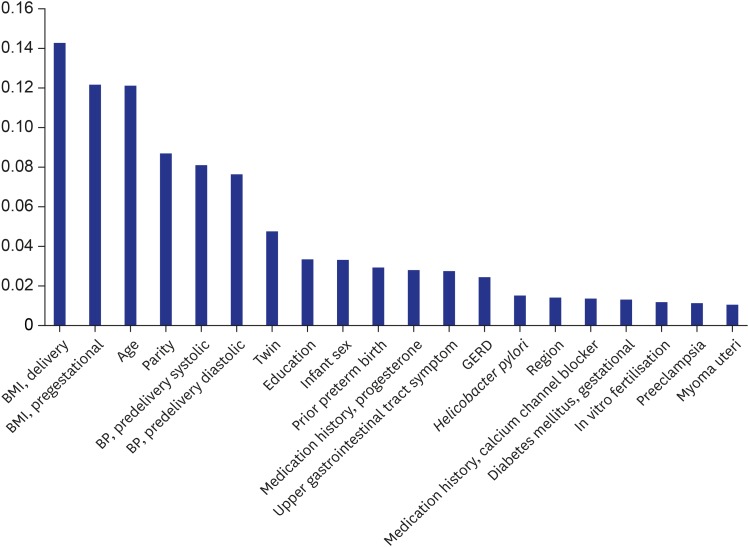
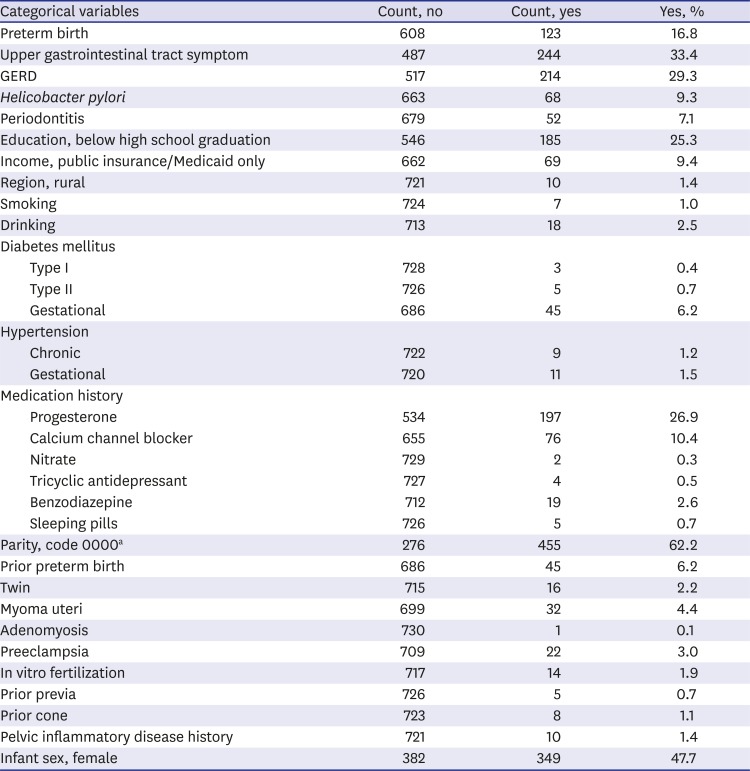


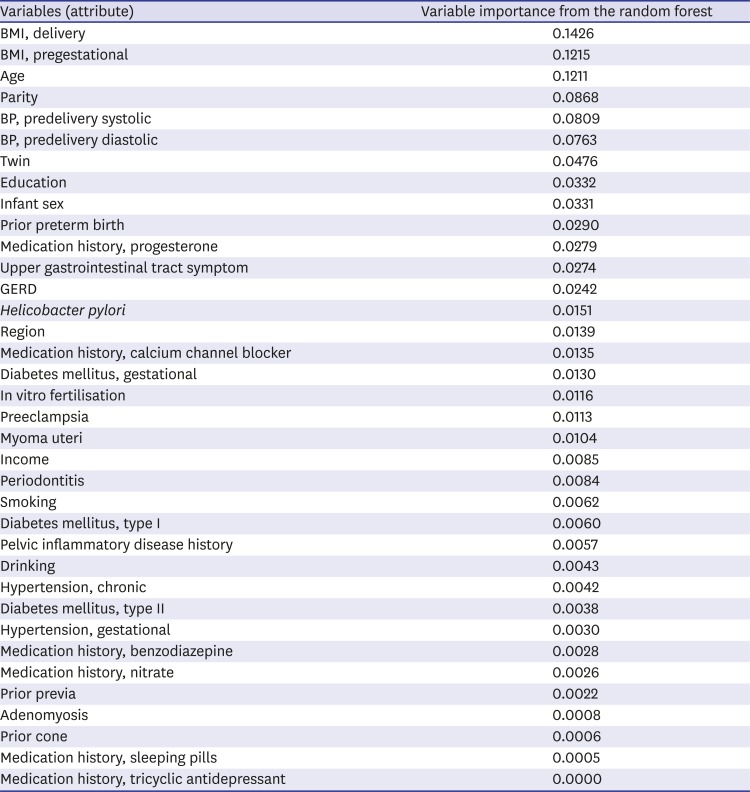




 PDF
PDF Citation
Citation Print
Print



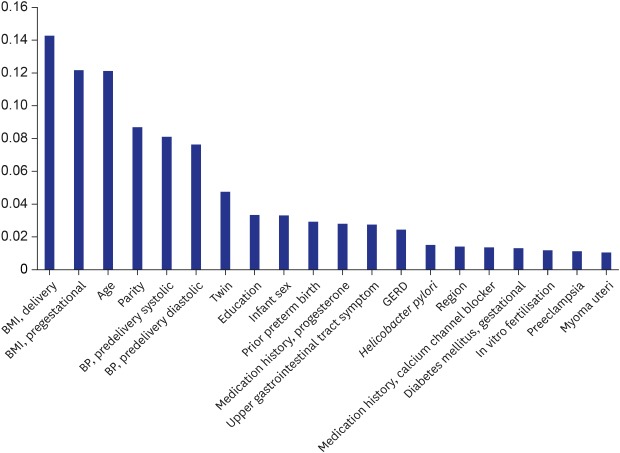
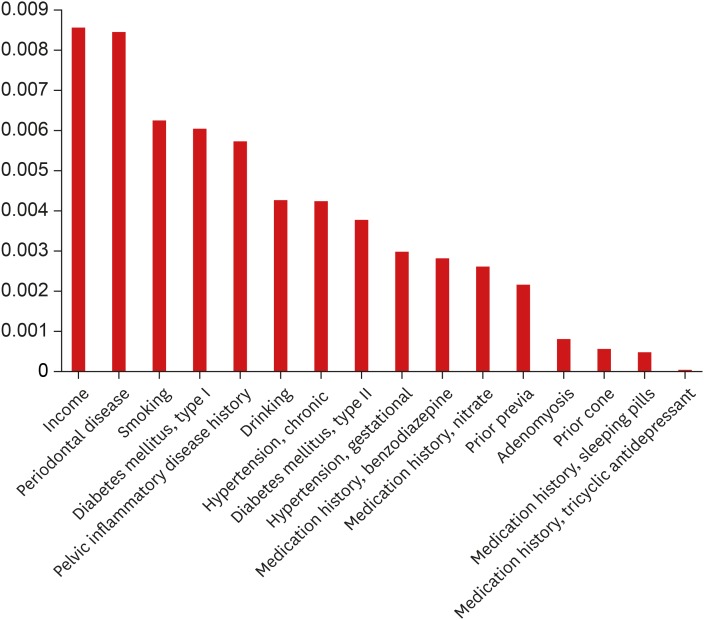
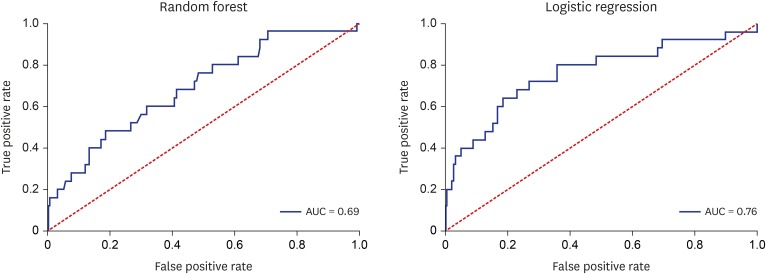
 XML Download
XML Download